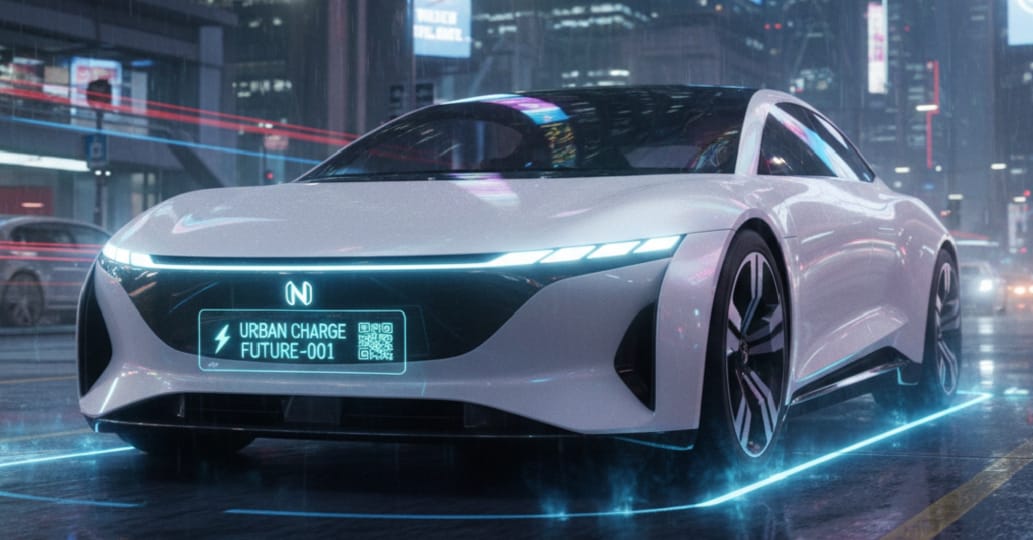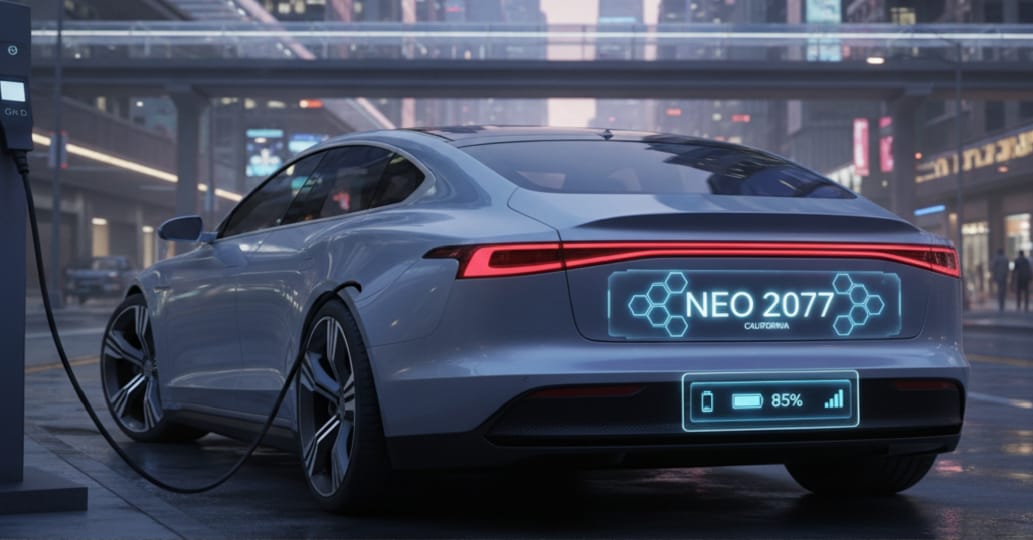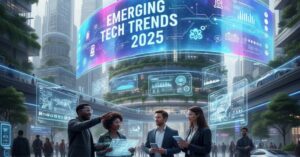Introduction of Smart License Plate Technology
Modern transportation’s most intriguing developments are fast emerging smart license plate technology. Thanks to the emergence of IoT cars, GPS plates, and improved vehicle tracking, our roads are becoming smarter, safer, and more efficient systems. This essay will cover the operation of this potent technology, its significance, and projected future.
Let’s look at how basic license plates are evolving into digital power tools changing vehicle management.
Smart license plate technology: knowledge
Clever license plate technology makes plates that are way more useful than regular metal ones because it uses things like microchips, GPS, wireless transmitters, and sensors that are built into the plate.
These plates go beyond merely displaying statistics.
They detect, track, update, communicate, and even assist to stop crime.
Smart plates are “smart” for what reason?
Smart license plate technology usually consist of:
- Vehicle tracking GPS receivers
- Wireless communication (Bluetooth, cellular, or satellite)
- Digital screens showing stolen vehicle signals or breakdown alerts
- Vehicle condition is monitored by IoT sensors.
- Remote management tools enabling authorities to rapidly change plate status
This is why intelligent plates may directly engage with law enforcement agencies, toll booths, parking systems, and smart cities.
How IoT Cars Fit with Smart license Plate Technology
Cars using IoT already link to:
- Traffic lights
- Networks of navigation
- Clever parking meters
- Highway sensors
Combining IoT cars with smart license plate technology gives them fresh abilities like quick emission monitoring, automated toll payments, and real-time status updates.
This provides a bright, completely linked driving experience.
Why Today Smart License Plate Technology Is Important
Every year the road environment gets busier. More cars bring more traffic problems, crime, fraud, and accidents. That is where intelligent license plates find use.
Increased Public Safety
Clever plates can assist in spotting:
- Vehicles taken without permission
- Suspicious movement
- Ended registrations
- Violations of traffic laws
This real-time detection enables law enforcement to respond more quickly and correctly.
Vehicle Recovery & Faster Crime Prevention
Since plates can send out location signals, stolen cars can be located considerably faster.
Instead of just looking around aimlessly, cops get accurate GPS tracking information, which really helps them find people who are missing.
The Development of IoT Cars
With features like sensors, automated systems, and real-time communication, IoT cars are rapidly becoming the norm.
Real-time interaction with traffic systems
IoT cars engage with urban infrastructure by means of smart plates; for instance:
1.Sending warnings in the event of accidents
2.Steering clear of clogged pathways
3.Obtaining dynamic toll pricing
4.Talking to traffic lights to improve flow
Ecosystem of Connected Car
Creating a unified car ecosystem in which every car is linked to the wider transportation network depends largely on intelligent license plate technology.
READ ALSO :The Rise of Digital License Plates: How They’re Changing the Future of Driving
GPS plates are what they are and how they operate.
GPS plates are smart license plate technology with built-in GPS tracking devices that keep tabs on your car all the time.
Understanding Tracking Components
An ordinary GPS plate consists of:
1.GPS processor for exact location
2.Sending data’s cellular module
3.Secure tracking’s encrypted communication system
4.Indicators of tampering detection
5.Long-lasting internal battery
This makes concealing a car’s movement nearly impossible.
GPS Plates Security Layers
Key is security. GPS plates consist of:
- Enciphered information
- Technologies against spoofing
- Tamper-resistant switches
- Live location alerts
These characteristics guarantee the system is hard to hack and trustworthy.
For city administration, vehicle tracking is a revolution
Tracking vehicles not only benefits people but also revolutionizes the way whole communities work.
Fleet Optimization
GPS plates let businesses:
1.Keep track of driver routes
2.Lower fuel expenses
3.Streamline delivery times
4.Avoid unapproved travels
5.Increase fleet productivity
Driver Behavior Analytics
Tracking helps to show:
1.Strong braking
2.Surprising side trips
3.Over-speeding
4.Unused time
This supports governments and companies in encouraging safer driving.
Advantages of Using Smart License Plate Technology
Clever license plates provide a number of significant advantages:
Cost Reduction Opportunities
Automated solutions lessen:
- Workload for police
- Costs of toll booths
- Manual examinations
- Fraud discovery bills
Accuracy & Automation
Machines do not make the same errors humans do. Clever plates:
- Catch Tags Expired Immediately
- Cut down misreadings.
- Eradicate human error.
Efficiency and openness are increased by this.
Difficulties and Restrictions
Smart plate systems are excellent, but they also present difficulties:
Privacy Issues
Vehicle tracking brings up significant privacy issues concerning who has access to the data and how long it is kept.
Implementation expenditures
Smart plates call for:
1.Fresh construction
2.Platforms for cloud computing
3.Maintenance of devices
Governments have to spend a lot of money before they can see the long-term benefits.
Worldwide Modern Vehicle Tracking System Examples
Case Study: Netherlands
The Netherlands applies digital plates for:
- Toll costs
- Tracking emissions
- Management of congestion
Improved road safety and less traffic congestion result from this system.
Study Case: South Korea
South Korea links intelligent licence plates with:
- National police records
- Intelligent toll lanes
- Routing emergency vehicles
This produces among the most sophisticated traffic control systems worldwide.
READ ALSO :AI in Daily Life: How Artificial Intelligence is Transforming Our World Today
Smart License Plate Technology Trends of the Future
Traffic estimates run by artificial intelligence
Examining smart plate data, artificial intelligence may help forecast:
1.Peak traffic volumes
2.Likely incidents
3.Vehicle malfunction
4.Road hazards
Blockchain for Safe Car Records
Vehicle data kept securely on blockchain guards against tampering or fraud.
Frequently Asked Questions
1.What kind of technology is smart license plates use?
Using IoT sensors, GPS, and connectivity, this contemporary digital plate improves vehicle control and security.
2.Are GPS plates permissible?
Yes, many nations are embracing them even if rules differ depending on the area.
3.Do intelligent plates breach privacy?
They monitor vehicles, hence stringent privacy regulations are required to safeguard user data.
4.Will intelligent plates assist locate stolen cars?
Indeed they offer real-time GPS tracking.
5.Smart plates price high?
They initially cost more, but over time they save money by means of safety advantages and automation.
6.Where might one find more information on intelligent transportation systems?
For worldwide developments, you might search on websites like the ITS World Congress.
Conclusion
Smart license plate technology is more than just an improvement; it’s a revolution. Our transportation systems are changing as IoT cars become widespread and GPS plates improve vehicle tracking. These inventions will make our roads safer, our cities smarter, and our digital environment ready for the future.
Smart license plate technology are probably going to be popular all around the world as technology gets better. This will change the way we drive and how governments handle transportation networks.











